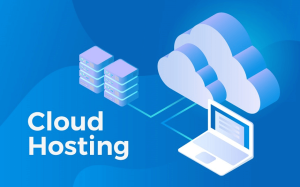What is an Electronic Document Management System (EDMS)?

Electronic document management (EDM or DMS for Document Management System or EDMS for Electronic Document Management System) refers to a process to define, design, produce, organize, disseminate and manage information and paper documents or electronic documents within an organization. The term EDMS also describes the software allowing the management of this documentary content.
EDMS generally refers to the deployment of a process and the accompanying systems (example of use: mass digitization of paper documents), for scanning, indexing, classification, information storage, access (navigation and search), and dissemination of digital records from paper-based documents.
Furthermore, it considers the need to manage documents according to their life cycle, from creation to archiving, including review, electronic approval, and management of the different versions.
EDMS solutions and projects can allow rapid gains in quality and cost for organizations, whether private companies or administrations. For example, the return on investment of a “standard” invoice dematerialization project is less than one year.
EDMS has classification/navigation functions and a search engine that makes it possible to find the managed content using views, structured or full-text searches).
There are four significant steps in an electronic document management system: acquisition, processing, storage, and dissemination. In addition, there is a fifth step to distribute new documents: design.
Acquisition of Documents
The acquisition can be carried out by:
- Integration of existing paper documents: for paper documents, this is digitization using scanners. Where possible and valuable, scanned documents can be sorted using Automatic Document Recognition (ADR) technology. Information is extracted from scanned images by implementing automatic document reading (ADL) technology. This technology can use optical character recognition (OCR), barcode recognition, and intelligent character recognition (RIC) techniques, including, for example, linguistic verification rules on recognized words.
• Integration of existing electronic documents: another family of records that consists of electronic documents such as office files, PDF files, etc.
• Electronic document production can be done by different companies using group software or groupware which is designed to help collaboration between people working on a common task. Documents can also be obtained by business intelligence software with the help of the tool.
• Electronic document exchange: this occurs when two partner organizations wish to share electronic documents. They can then interconnect their information systems using an electronic data interchange (EDI) device, subject to compliance with the same standardized data format.
Regardless of how the document enters the management system, it can often go through a validation chain or workflow to arrive at a final version approved by the users concerned. The workflow linked to the validation of a document can be configured and considers the access rights and profiles of the system’s users; it most often affects the document’s status, version, and visibility.
Document Processing
Indexing constitutes the description of the document and its content to facilitating its use. Therefore, the rapid retrieval of documents is conditional on the creation of an index schema. In this respect, we distinguish:
- Indexing by type: offers a formal description of the paper using its metadata (classification, author, title, source, date, etc.), whose vocabulary is standardized to allow the use of this metadata.
• Indexing by concepts or keywords: targets the content of the document to facilitate search operations. It can also be a more advanced system where the designer selects terms from a thesaurus (list of words linked by hierarchy or equivalence relationships) related to the document.
Document Storage
The problem of storage is unavoidable. It is essential to ensure that all the important documents are stored safely and securely and that they are easily accessible. Not storing them in the right way can cause several issues. This is why when choosing a storage solution, the following aspects should be considered:
- The storage medium should be adapted as best as possible to the volume of the documents. Depending on how often it needs to be accessed and the importance of the data, it must also offer a short access time.
• The storage organization can hierarchize according to the content of the documents (text, video, image, etc.) of their origins, states, types, etc.
• The retention period must also allow periodic purification of the system to facilitate storage and feed the archives. To this end, the system must consider an exit to final archiving in an electronic archiving platform intended for this use.
• Backups must be completed as frequently as required according to the company guidelines.
Distribution of Documents
Documents can be distributed either via the Internet or intranet. In addition, some EDM software vendors offer thin client viewing, which provides all or part of the document viewing and indexing functionality in a web browser.
Document Valuation
The electronic document management system makes it possible to control and manage the evaluation of documents. With digital content analysis solutions, the evaluation and analysis of content have never been easier. The transformation of documents into indicators, indicators into trends, trends into situations, situations into decisions represents the challenge of the Content Analytics market.






